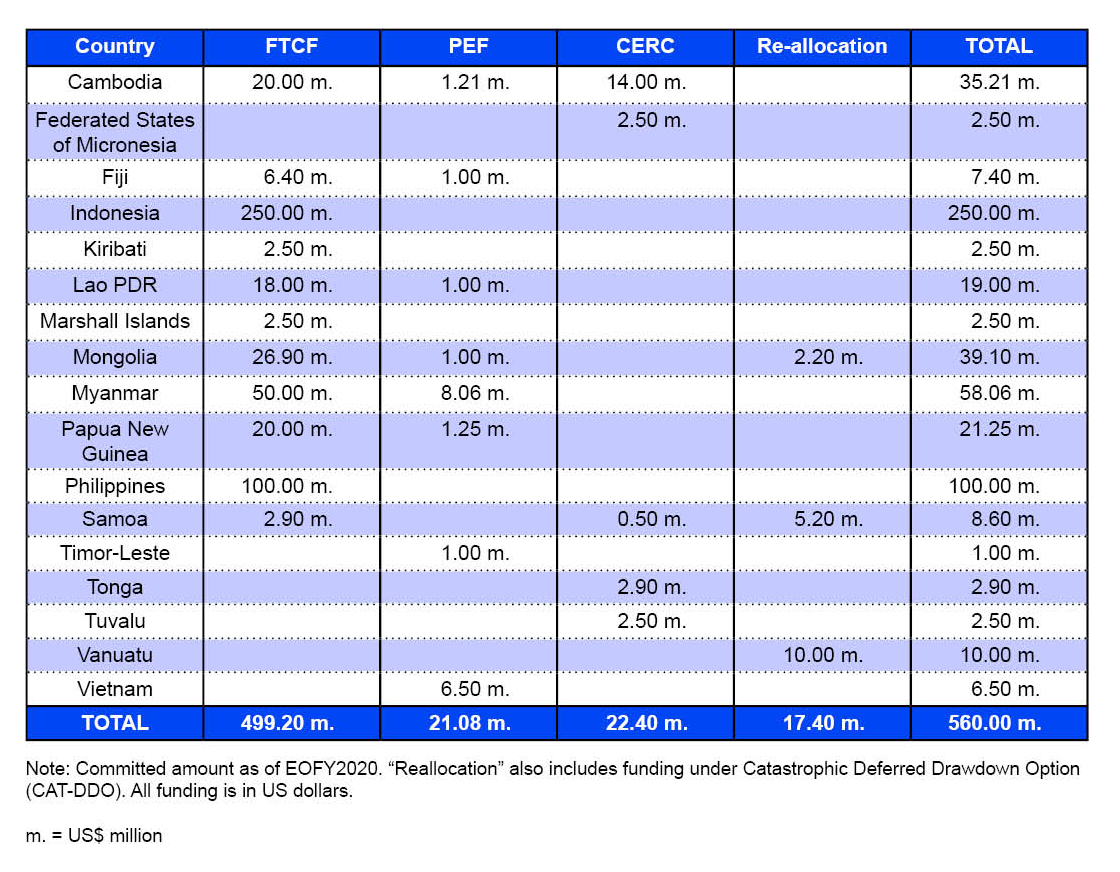As part of the , development partners are doing what they can to support governments across the world to prepare for and respond to this latest threat to health security and UHC for all. Joining the efforts of many others, the World Bank on March 17, 2020 provided a US$14 billion package of fast-track COVID-19 financing (FTCF) to assist countries in their efforts to prevent, detect and respond to the pandemic. This funding is going through existing and new projects to support the health sector and broader national responses to the pandemic, recognizing the dual impact on health and economic development. On May 19, the World Bank Group announced its emergency operations to fight COVID-19 have reached 100 countries, representing 70% of the world’s population. This includes financing under the FTCF as well as other forms of financing, including redeployment of existing projects. In total, the World Bank Group will deploy as much as US$160 billion over a 15-month period, tailored to the health, economic and social shocks countries are facing.
In the East Asia and Pacific (EAP) region, development partners are collaborating to help countries cope with the impacts of this pandemic. They include Australia’s Department of Foreign Affairs and Trade (DFAT), New Zealand’s Ministry of Foreign Affairs and Trade (MFAT), World Health Organization (WHO), Pacific Community (SPC), UNICEF, the World Bank, Asian Development Bank and numerous other institutions. Efforts are well underway to support health ministries to strengthen health services and the systems that underpin them, to enhance disease surveillance, and the effective management and treatment of people with COVID-19 infections. They also aim to fill critical gaps in countries that include strengthening prevention activities, rapid detection, and preparedness and response to disease outbreaks.
Countries in EAP are getting funding support through a range of as well as reallocated existing funding. The World Bank team has drawn on the analysis completed over recent years under the MDTF to Advance UHC to help inform investment decisions. The FTCF was established specifically to support countries globally in responding to the disease. It complements existing financing mechanisms including the Pandemic Emergency Financing Facility (PEF) and the Contingent Emergency Response Components (CERC) in some projects. Eight countries in the East Asia Pacific region have received grants from PEF totaling US$21.08 million which was triggered to fund the world’s poorest countries when facing cross-border, large-scale disease outbreaks. Additional funding has also been redirected through existing projects to help strengthen health systems and emergency response in the wake of COVID-19.
